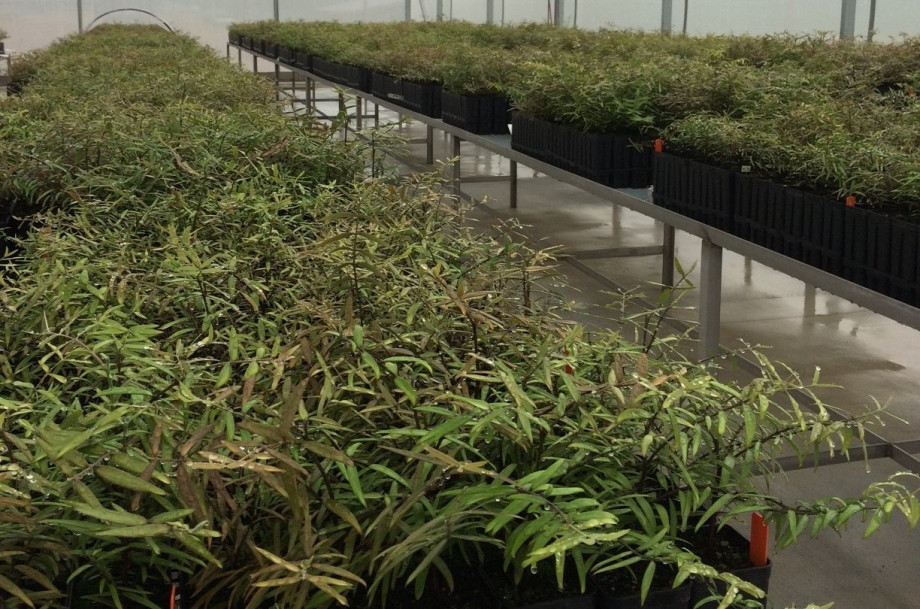Growing Kauri
Strict protocols for the growing and production of Kauri are an important part of protecting Kauri from the pathogen Phytophthora agathidicida (PA), which causes kauri dieback disease. The National Plan for Kauri includes rules for anyone growing Kauri in Aotearoa New Zealand.

About Kauri
Kauri are a taonga (treasure) of Aotearoa, New Zealand, and the third largest conifer in the world. Māori see the health of Kauri as an indicator of the wellbeing of the ngahere (forest) and the people.
Kauri are threatened by a soil-borne pathogen called Phytophthora agathidicida (PA), which causes the fatal condition known as kauri dieback disease.
To preserve Kauri for generations to come, 10 rules have been introduced as part of a National Plan to protect Kauri from PA.
Make Kauri protection second nature
If you are growing Kauri for sale, or to be moved off your property, you must follow the below rules of the National Plan for Kauri.
Summary of National Plan rules
Growing Kauri plants or trees
- All Kauri plants or trees must be grown according to a Kauri plant production plan if they are going to be moved off the property from which they were grown. (Rule 3)
Moving young Kauri plants, Kauri seeds and associated soil carries a high risk of spreading the PA pathogen. Rule 3 helps ensure that this high-risk activity is undertaken only by individuals and organisations that have practices in place to prevent the spread of the PA pathogen.
Unhealthy Kauri plants or trees
-
Learn to recognise disease symptoms. If your Kauri trees look unhealthy, you must let Tiakina Kauri know. (Rule 1) Please email Tiakina Kauri.
- Note: If the PA pathogen is detected in your soil, please let Tiakina Kauri know.
Rule 1 helps improve understanding of the distribution of the PA pathogen in Aotearoa.
You may also need to do the following, if requested:
- Provide information to Tiakina Kauri to help manage the disease caused by the PA pathogen. (Rule 2)
Rule 2 helps Tiakina Kauri collect information that improves understanding of how the PA pathogen spreads.
The full details of these rules is available on pages 8-10 of the National PA Pest Management Plan.
What is a ‘plant production plan’?
A plant production plan must include certain practices and procedures, which are detailed on pages 8-10 of the National PA Pest Management Plan. Note: Nurseries that are Plant Pass certified to the Plant Pass Core Standard and the PA (Kauri) Schedule will automatically comply with this rule. For information about becoming Plant Pass certified, see the Plant Pass website.
Do I have to become Plant Pass certified in order to grow Kauri?
No, but you will need to develop a Kauri plant production plan that meets the requirements of rule 3, as detailed on pages 8-10 of the National PA Pest Management Plan.
Tiakina Kauri has developed a Nurseries best practice guide to help nurseries who are not part of Plant Pass to develop their production plan and meet the requirements of Rule 3.
If requested, you must be prepared to show Tiakina Kauri your plan, along with your records demonstrating your compliance with your plan.
What happens if I’ve grown Kauri plants before the National Plan comes into force?
You can move healthy Kauri plants off your production premises if they were grown before 2 August 2022. However if your Kauri plants look unhealthy, you will need to test them for the PA pathogen before you move them.
What if my Kauri plants look sick?
If a batch of Kauri plants you are growing show any signs of disease or sickness, you must test them for the PA pathogen before the plants are moved off your premises. You will also need to let Tiakina Kauri know that your plants are looking unhealthy, as per Rule 1 above.
What should I do if my Kauri plants test positive for the PA pathogen?
If any Kauri plants you are growing look healthy but test positive for the PA pathogen, you should let Tiakina Kauri know immediately. The Landfill Disposal of contaminated material best practice guidelines contain more information about how to safely dispose of potentially infected plant material.
How do the National Plan rules work?
Tiakina Kauri is helping people understand and comply with the rules of the National Plan through education and awareness programmes.
In cases of clear and substantial or continued non-compliance with the rules, prosecution or infringement fees could be applied. Fees range from $300 (Rule 8) to $400 (Rule 9). An individual or corporation could also be charged under the Biosecurity Act 1993, which could result in a criminal conviction with a maximum fine of $5,000 for an individual and $15,000 for a corporation.